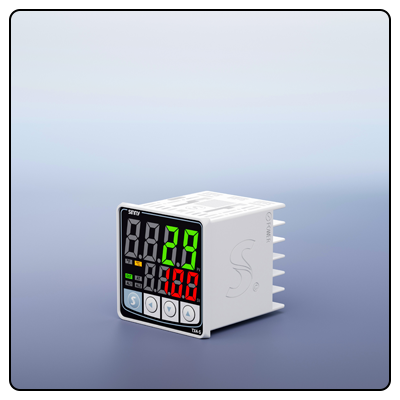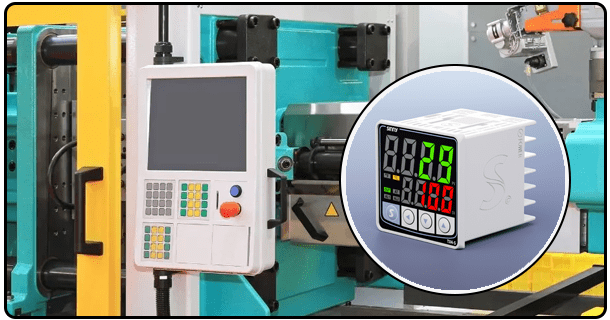What is a PID Temperature Controller? | Comprehensive Guide
Discover the intricacies of PID temperature controllers. Learn about their components, how they work, their advantages, and applications in various industries
1. Introduction
Temperature Controllers mes PID Temperature controllers have become an indispensable device used across industries and applications in achieving desired temperatures, helping processes run more smoothly by maintaining them within specified parameters. PID temperature regulators (Proportional-Integral-Derivative) are one of the most frequently-utilized regulators, making their operation and benefits essential when understanding temperature-sensitive processes.
2. Understanding Proportional-Integral-Derivative Control
PID stands for Proportional, Integral and Derivative control - an advanced technique used to maintain desired output of any system. A PID controller continually calculates an error value comparing desired setpoint (SV) with measured process variable (PV), then correcting this deviation with proportional, integral and derivative terms; hence its name.
* Proportional Control (P):
This component produces an output value which correlates directly with any errors detected; responses can then be altered by multiplying this error value with an adjustable constant known as proportional gain if its magnitude becomes excessively great; otherwise system instability could ensue.
* Integral Control (I):
Integral control adds up error values over time and integrates them to produce an overall correction based on cumulative steady-state error accumulated throughout time; helping remove residual steady state errors which proportional control cannot account for.
* Derivative Control (D):
Derivative Control is an essential element to system stability, acting as an absorbent dampening element and improving response time while providing improvements and delays for stabilization and response delays.
3. Components of a PID Temperature Controller
PID temperature controller comprises three main parts that collaborate to achieve desired temperature:
* Proportional Component:
Aligns output proportionately with error levels, helping minimize overall errors but not entirely eliminate them.
* Integral Component:
Used to address any errors over time and maintain setpoint.
* Derivative Component:
Responds to changes in error rate with predictive adjustments that prevent overshoot or oscillation from taking place.
4. PID Temperature Controllers Work
PID temperature controllers employ a feedback loop mechanism in which a temperature sensor measures current temperatures (PV). Based on comparison between this value and desired setpoint (SV), an error calculation takes place, then adjusted using PID algorithm which then controls heating or cooling elements to bring setpoint temperatures closer together.
* Feedback Loop Mechanism:
By continuously measuring, comparing, and adjusting temperature readings within acceptable parameters, an automated feedback loop ensures temperature stability is met.
* Sensors and Actuators:
Sensors provide precise temperature readings while actuators (such as heaters or coolers ) make necessary adjustments based on controller outputs.
* Tuning of PID Controller:
For optimal results, proper tuning of all three PID gains (proportional, integral and derivative gains) must be achieved - either manually or using software tools designed specifically to automate this process.
5. Advantages of PID Temperature Controllers
PID Temperature Controllers Offer Many Advantages There are numerous advantages associated with PID temperature controllers over traditional thermostats:
PID controllers offer accurate temperature management that reduces fluctuations while creating the optimal environment.
* Versatility across Applications:
These adaptable materials can be utilized across industries as well as household appliances and scientific research, making them extremely flexible materials to work with.
* Automation and Reduced Human Involvement: Once properly calibrated, PID controllers operate autonomously with minimal supervision from human employees or intervention from other parties.
6. PID Temperature Controller Applications
Temperature control using PID controllers has many uses across various fields and industries; such as:
* Industrial Applications:
Temperature control in industries like plastics, food processing and pharmaceuticals is crucial to product quality and safety, which PID controllers ensure by making sure extrusion, baking and chemical reactions occur at optimal temperatures.
* Domestic Applications:
Common household appliances such as ovens, refrigerators and air conditioners rely on PID controllers to maintain comfortable and safe temperatures for optimal operation.
* Scientific Research Applications:
PID controllers play an indispensable role in scientific laboratories conducting experiments that require precise conditions; PID control's temperature maintenance capabilities help create the perfect temperature environment to enable accurate, reproducible results.
7. Common Issues and Troubleshooting
While PID controllers typically deliver reliable performance, there may still be times when difficulties arise which cause discrepancies between PV and SV readings. Commonly encountered issues include:
Faulty Sensors Can Affect Temperature Regulation:
Faulty sensors may produce inaccurate PV readings and lead to improper temperature regulation, necessitating periodic calibration and maintenance to maintain accurate readings and measurements. In order to Ensure Accurate Measurements.
* Controller Settings:
An incorrect configuration or settings within a controller could lead to it misresponding to changes in PV production; reviewing and changing its parameters could help remedy such problems.
* Environmental Factors:
External factors like changes to ambient temperatures or airflow patterns can have an effect on PV performance, making accurate temperature control much harder to achieve. Stable environments around temperature-controlled systems must exist if accurate temperature control is to remain stable.
8. Conclusion
Understanding the roles of PV and SV in temperature controllers is fundamental for effective temperature management in various applications. By continuously monitoring and adjusting the PV to match the SV, temperature controllers ensure processes run smoothly and efficiently. As technology advances, temperature control systems will continue to evolve, offering even greater precision and reliability.
- Understanding Mold Temperature Controllers: Types, Applications, and Benefits
- What is PV and SV in a Temperature Controller? | Comprehensive Guide























